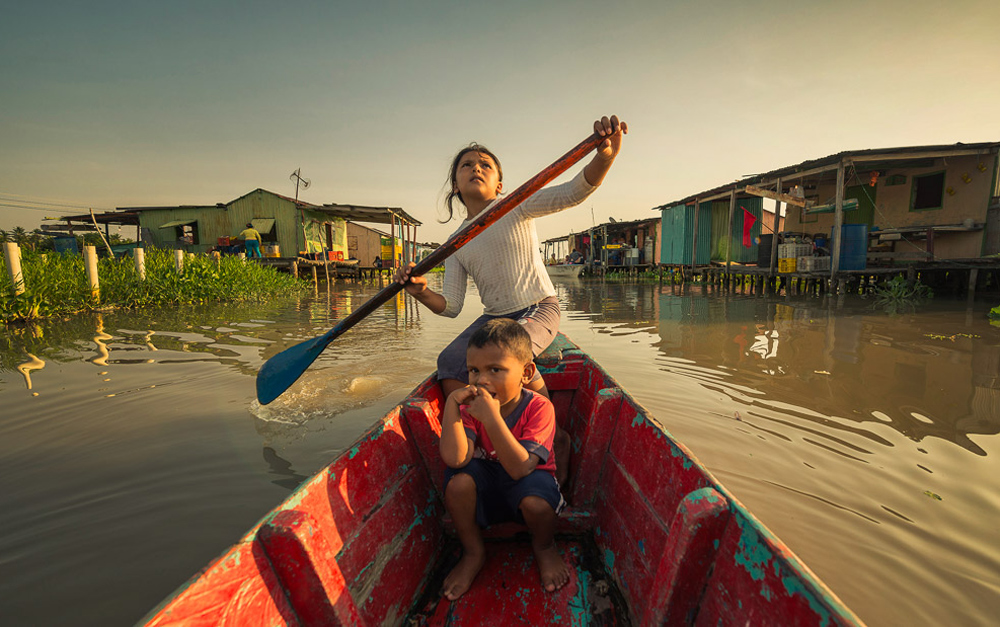Erosion is at the heart of “Once Upon a Time in Venezuela,” but not in the way one would initially think when director Anabel Rodríguez Ríos touches down in Congo Mirador. Removed from the tumult in the major cities such as Caracas, the echoes of the fraught political situation reach the fishing village that’s fallen on hard times in recent years via television, but can only be heard faintly in the background much like any other quiet force of nature that is shaping the community for the worse, through it’s largely imperceptible. While debate over the policies of President Nicolas Maduro, who succeeded the divisive Hugo Chavez, can be heard always going in the background, the more pressing concern for the villagers is the rising sediment levels that are bringing the houses, all propped up on stilts as a concession to the deep sea full of fish that bring sustenance, up to dry land.
Aware of the exoticism of a place where there are no streets for people to walk or drive, Rodríguez Ríos enters Congo Mirador through the eyes of rambunctious children who bring out the distinctive nature of the environment as they run roughshod, pushing the boundaries of a place that’s closed itself off to the rest of the world to the point where the mother of one headstrong girl, Negra, warns she’ll serve up “a beating with your breakfast, if you want.” The way the filmmaker captures Negra’s imagination before being brought down to earth so harshly is indicative of the story that follows in “Once Upon a Time in Venezuela,” which aims to capture the country in microcosm through the cold war between Tamara, likely the wealthiest woman in the village who has parlayed her fortune into a position of being a government liaison – or vice-versa (while she makes her devotion to Chavez well known, the verite film offers little historical context besides what happens in the moment) and Natalie, a teacher at the local school who tends to the ever-dwindling number of children in the community as opportunity evaporates with the receding tide.
The two never cross paths in the film – they can’t, when Tamara has effectively blocked Natalie from attending any community planning meetings that take place at her ranch, but Rodríguez Ríos draws a compelling parallel to speak to the perversion of socialism in Venezuela where inequity has only grown in recent years with Natalie unable to find anyone who will listen to her as she sees how the lack of resources available to her students takes a toll on their daily life while Tamara can call up anyone on her cell phone, and pushes for more phone lines to benefit her friends, but few others. Throughout the film, the director finds elegant ways to get at the ugliness of the region’s political situation, showing children washing off oil, the source of Venezuela’s economic power, from the shell of a tortoise they want to play with or the casual bribes offered by Tamara to ensure local elections go her way, showing how even the most hardscrabble of communities isn’t immune to corruption and bent towards the will of those with the most money.
Rodríguez Ríos stays around in Congo Mirador long enough to see the fallout from any self-serving decisions that have been made earlier in the film, and “Once Upon a Time in Venezuela” makes visible the kind of destruction of a community that often can’t be seen physically until there is nothing left, and if for no other reason, the film serves as valuable cultural preservation, enlivened by the musical interludes of those too old to leave and the adventures of the young who don’t know better than to see the waterways as a source of fun diversion. Still, Rodríguez Ríos actively attempts to turn this memory into a warning and just as the reverberations of the larger world eventually make their way to Congo Mirador, you suspect the reverse also holds true when you make a much noise as “Once Upon a Time in Venezuela” does.
“Once Upon a Time in Venezuela” will be streaming through DOC NYC from November 11th through 19th.




